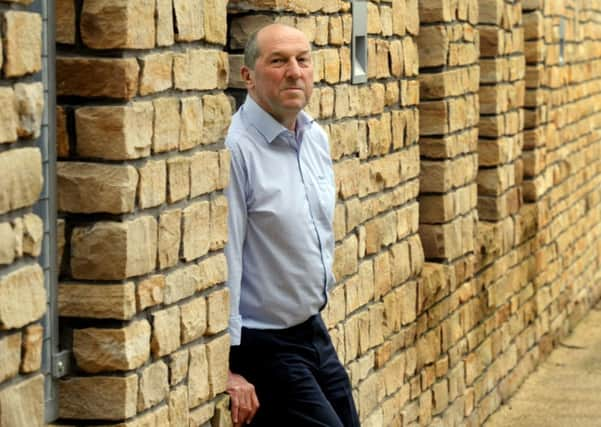How the Boxing Day tsunami took one detective from Harrogate to Thailand


Never did he expect these skills would take him thousands of miles from Yorkshire to Thailand, helping to lead a team tasked with identifying around 3,600 victims of the Boxing Day tsunami.
More than 230,000 people across 14 countries were either killed or remain missing from the disaster, and Mr Thewsey, then a Detective Chief Inspector with North Yorkshire Police, made seven trips to Thailand in the year following the tsunami.
Advertisement
Hide AdAdvertisement
Hide Ad“My background was serious crime investigation, but I had an add on skill as I’d trained as a senior identification officer for major disaster,” he said. “When I got the call on January 1 2005, even though my name was on that list, I was taken aback.”
He flew out for the first time on February 18, almost two months after the wave hit. But with 3,600 bodies still to be identified, the team at the International Management Centre on Phuket had a long, and upsetting, task ahead.
With staff from 32 countries, that task was chaotic in the early days, and Mr Thewsey’s job was to coordinate and manage identifications using police officers and scientists from all over the world.
“It was a bit of a whirl at first,” he said. “I arrived early morning and more or less went straight into the office. At the beginning of the operation, there wasn’t an internationally recognised system for DNA work. Different countries had different ways of storing records so we had to find a system that worked. Initially most of the identifications were made using dental records.”
Advertisement
Hide AdAdvertisement
Hide AdAt the earliest opportunity Mr Thewsey, a father of four, went to the coast to see the devastation caused by the tsunami himself.
“In the course of my work, I’ve dealt with homicides and fatalities. I was experienced in dealing with deaths. But this was in a different league,” he said. “I don’t think when I did that training, and when other officers did, anybody had a tsunami in mind. They were thinking of aeroplane crash, that sort of thing, nothing on the scale of this. It’s a once in a lifetime occurrence.”
There were many challenges leading the operation, but one of the biggest was that many of the victims simply had no records - or family - to identify them.
“I last went in February 2006, and when I left 3,000 bodies had been identified - but we were struggling by then. If an entire family was washed away, how do you get the information to identify them?”
Advertisement
Hide AdAdvertisement
Hide AdAlthough a lot of his work didn’t involve direct contact with the families of victims, many individual cases struck a chord. He remembers on family of seven from Sweden, who were all lost. Mr Thewsey’s team identified the last child in the family.
“They were there one minute, and the next they were gone,” he said. “You’re not completely divorced from it. There were poignant moments. When I identified the Swedish child I had a moment with myself. ”
Part of his work was helping prepare to hand over the operation to the Thai authorities.
“What I admire about the Thai people is they had a ‘get on with it’ attitude, even despite what happened. I am not saying they didn’t grieve but they have a different approach to it. They seemed to be able to put it behind them and carry on,” he said. “Out on Phi Phi you’d see men in flip flops and jeans with earth moving equipment leading the searches.”
Advertisement
Hide AdAdvertisement
Hide AdRebuilding the country after the tsunami wasn’t just a case of clearing debris, but rebuilding businesses, homes and the holiday trade - something that Mr Thewsey saw was noticeably affected on the few days he had off work while over in Thailand.
He said: “The striking this was, you’d go down to the beach and there’d be umbrellas and sunbeds with nobody on them, and it was high season. People were scared. It wasn’t until last 2005 that the holiday trade picked up again.”
On his return, Mr Thewsey received a commendation for his work, presented by John Yates, then deputy assistant commissioner of the Metropolitan Police.
“I don’t know if pride is an appropriate emotion, but if you ask what was the most significant moment of my police service, it’s got to be being part of this operation,” he said.
Advertisement
Hide AdAdvertisement
Hide Ad“The way I look at it, what had happened, had happened, you can’t do anything about it. All you can do is help give some comfort to the families in a terrible situation for them.
“Hopefully by finding the people they have lost and returning them to them, provides them with some comfort and closure.”
Mr Thewsey, now 61, retired as an officer in 2007, taking a civilian role at North Yorkshire Police. He has since used his experience to help other officers train, and says the police has “upped its game” in disaster response training, especially since the London Bombings in July 2005.
He returned to Thailand in 2008. By then, the operation had been formally handed over to the Thai police, and while some bodies remained unidentified, those remaining had been moved from Bangkok to be buried at Phang Nga. He visited a cemetery there at Bang Muang and was also able to make a poignant visit to the Chungkai War Cemetery, where his uncle, Harry Thewsey, was laid to rest after dying during the construction of the Thai Burma railway in 1943.
“Until then, I never felt the need to go back,” he said. “It was very reflective. It’s a shame we couldn’t have identified everybody but, we did most, and you have to take some comfort from that.”